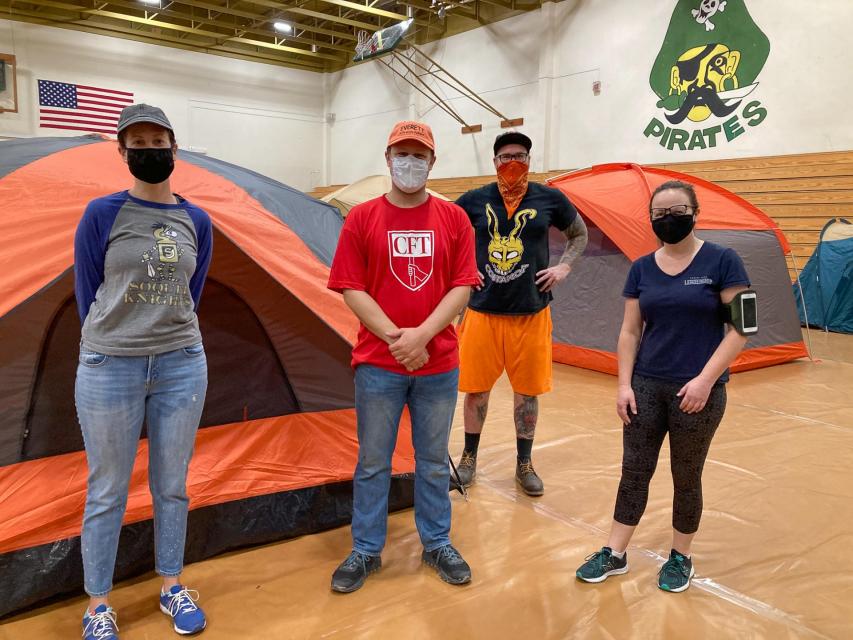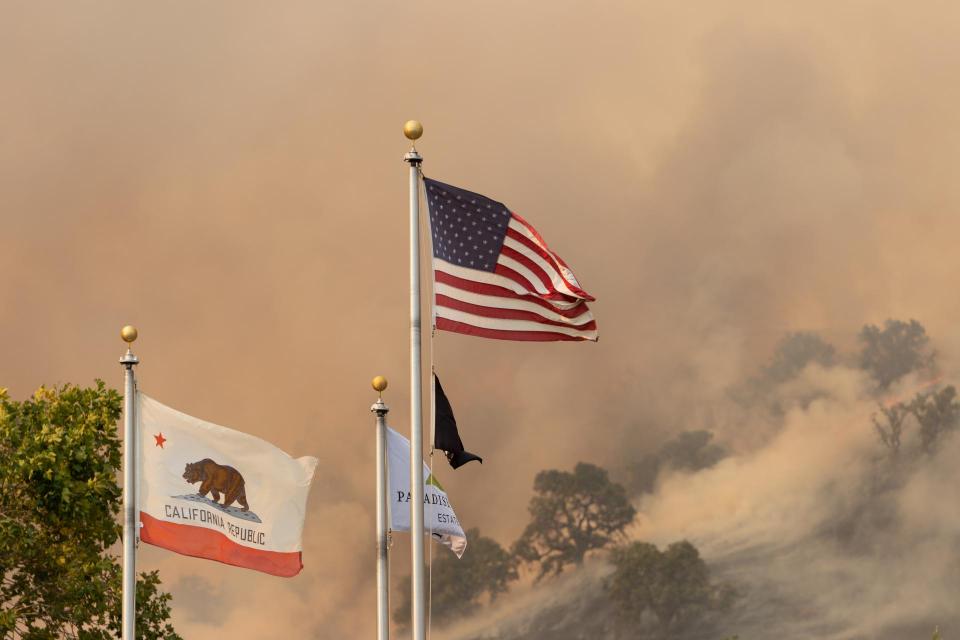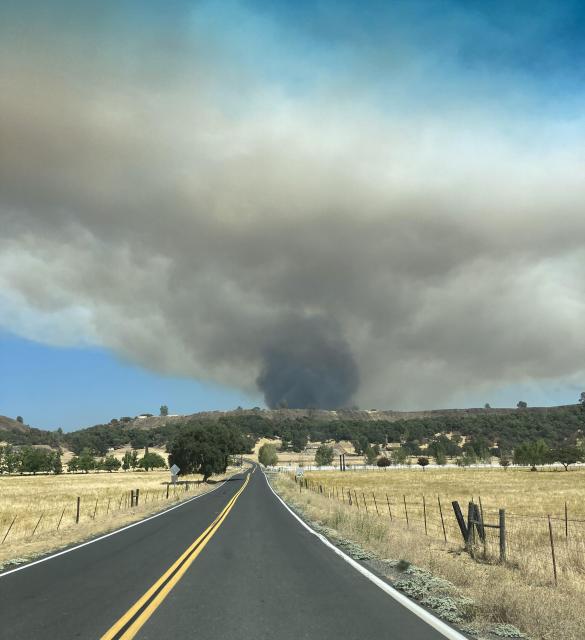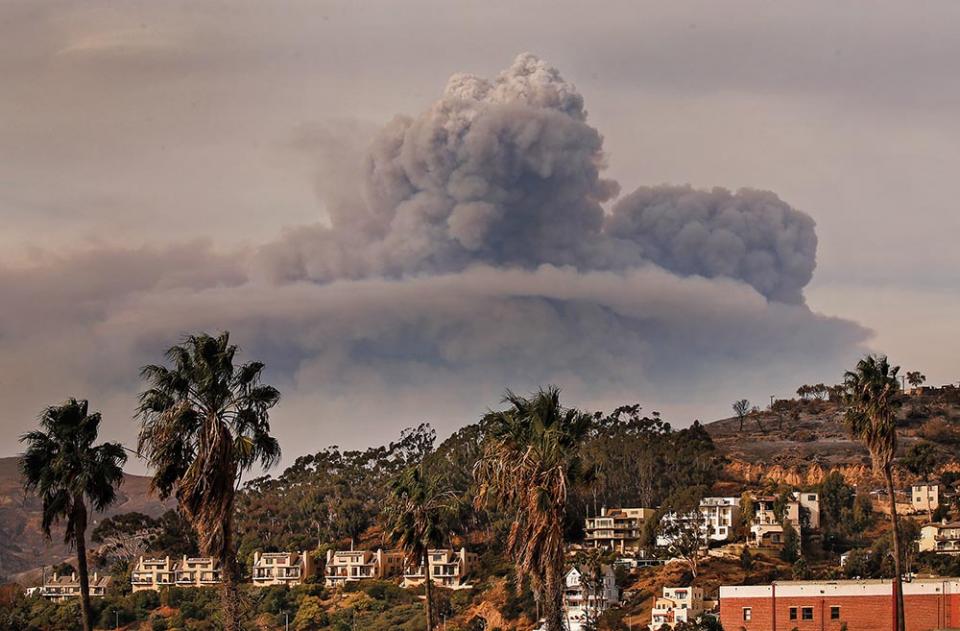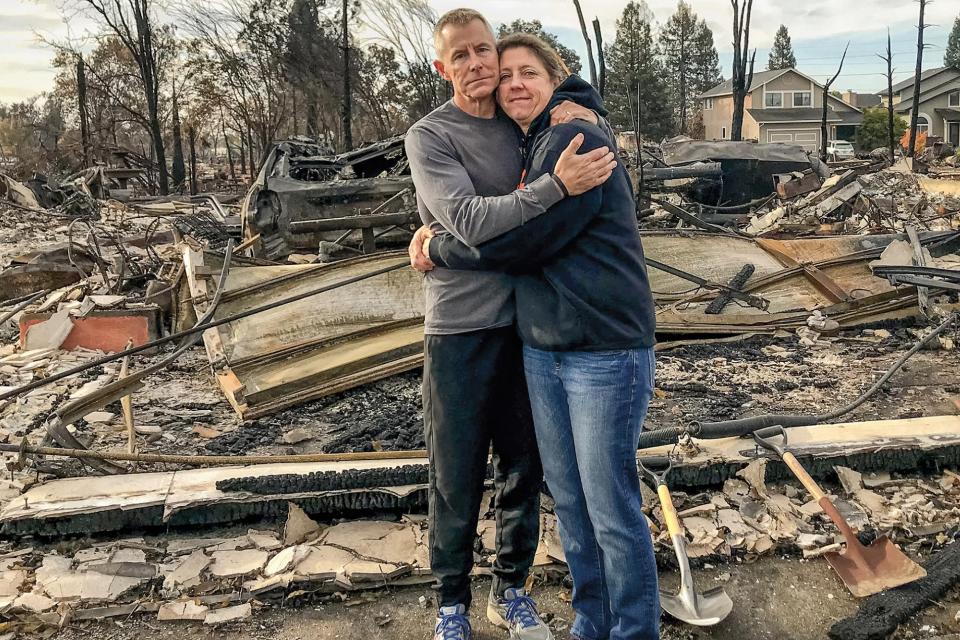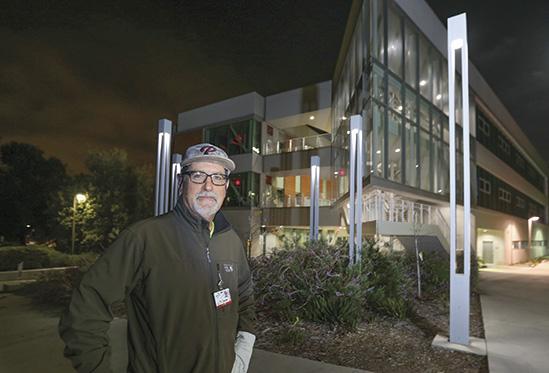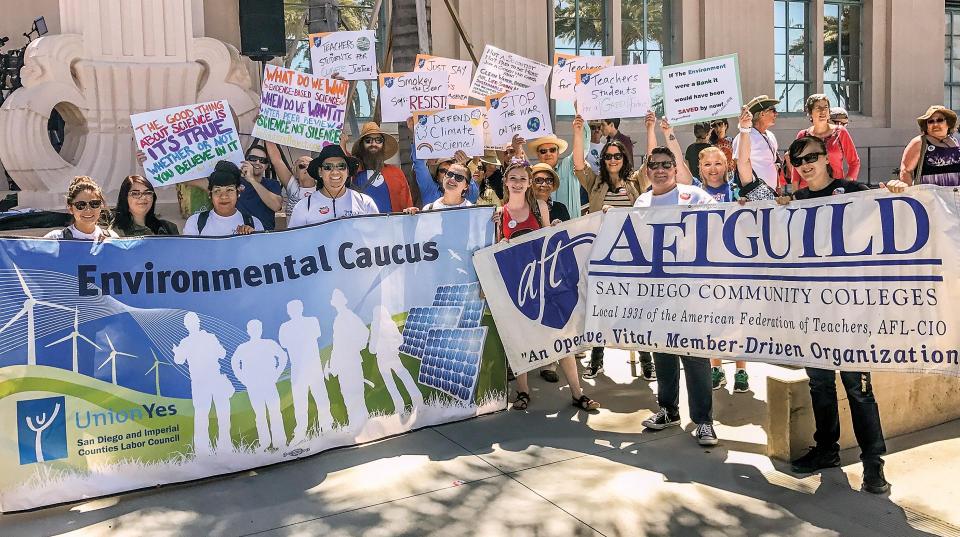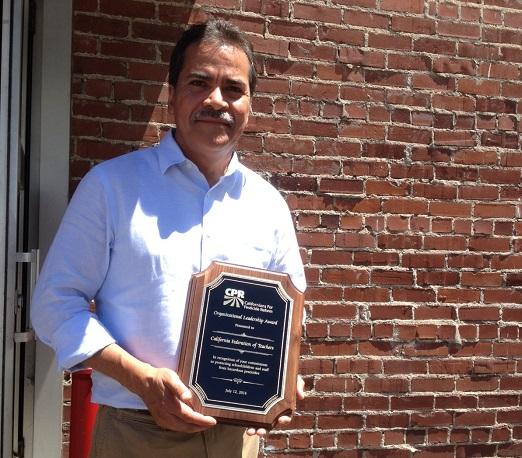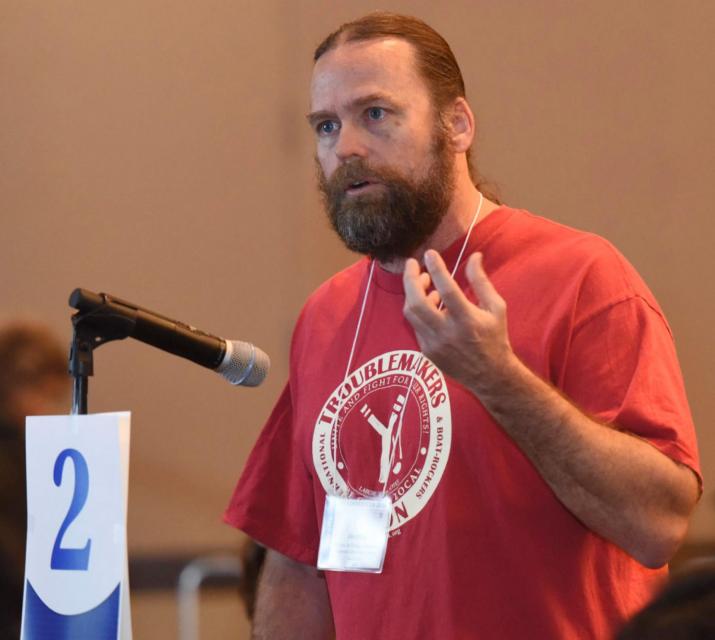What to know about extreme heat, schools, outdoor work and activity
How to prevent heat illness and stay safe at work
During California’s extended heat wave, public agencies have issued additional guidance for schools and staying safe during outdoor activity, adding to already existing guidelines about preventing heat illness for workers.
The Pollin Report: A bold clean energy transition in California is possible
CFT joins labor groups in support of newly released report
By Jim Miller, AFT Guild, Local 1931
In mid-June, California got some great news in a report sponsored by a wide range of labor unions, including the CFT. A clean energy transition in our state is a realistic goal and workers do not have to be left behind to accomplish it.
Unions step up to help wildfire evacuees
Wildfires threaten member homes and lives
Fires in California, many started by lightning, have burned a little more than a million acres, and scores of people have lost homes and thousands more have been forced to evacuate, including CFT members. The fires, some of the largest in the state’s history are burning in areas including Lake, Napa, Santa Cruz, San Mateo, Solano, Sonoma, and Yolo counties.
Staying safe in wildfire regions
Work safely, monitor air quality, and fight for climate justice
Climate change has led to a torrent of wildfires throughout California in recent years. During times of wildfire and smoke-filled air, it’s important to know how to stay safe on the job and at home. You can also get involved in CFT’s Climate Justice Campaign.
Staying safe at work and home during wildfires
Monitor air quality, know workplace safety and emergency response protocols
With wildfires burning in the north and south of our state, here is some helpful information about air quality, worker safety, and supporting families in need.
Air quality
You can find the Air Quality Index in your area by entering your zip code in the EPA’s AirNow online calculator, which is also available as an app for your mobile device. Purpleair.com is also a useful resource run by a private company, offering hyper-local air quality monitoring in many areas.
Lawsuit draws attention to hazardous chemicals on campus
When Susan Trask was 40, she went back to school and earned a degree in ornamental horticulture at Long Beach City College. Trask has since worked as a groundskeeper at the college district, and this year she was elected president of AFT Local 6108, the Long Beach Council of Classified Employees.
Largest-ever California wildfire tears lives apart
Colleagues, students and the union lend support to members in need
Although Laura Carrasco and her husband were at home in Oxnard on Monday, December 4, they didn’t smell the smoke because of the 60-mile-an-hour winds. Around 10:30 pm, they looked outside, saw flames, and a few minutes later, firefighters went up the street with bullhorns, telling people to evacuate.
It was the beginning of the Thomas fire, the largest recorded fire in California history, which burned 273,400 acres in Ventura and Santa Barbara counties, destroying about 1,000 structures.
Wildfires take member homes
Union provides immediate aid and comfort
After the North Bay fires destroyed more than 5,000 homes and killed dozens of people, William Ortlinghaus, who teaches physical education at Kenilworth Junior High and his wife Jen, a teacher at Valley Vista Elementary, were happy to go back to work after school had been cancelled for a week.
“It was the only normal thing we had left,” Jen said, “And my fourth graders were curious to see if we were still alive and our dogs were OK.”
Campus electricians shine in clean energy awards
Proposition 39 investments reap environmental and fiscal benefits
We don’t spend much time changing bulbs anymore,” said Palomar College electrician Rick Beach. “There aren’t many left on campus to change.”
And fewer by the day. Beach and maintenance and operations staff members of the Palomar Council of Classified Employees, AFT Local 4522, recently led the installation of LED lighting across Palomar’s San Marcos and Escondido campuses.
CFT becomes first statewide U.S. union to adopt Climate Justice Agenda
Core tenets advanced by task force adopted as union policy
By Jim Miller
The CFT made history in 2016 when it became the first statewide labor organization in the United States to adopt a Climate Justice Agenda. When Resolution 29 was brought before delegates to the CFT Convention, I presented the history of my local union in forging the San Diego and Imperial Counties Labor Council Environmental Caucus, the first such body in the nation.
Tom Steyer: Addresses climate, education
It’s typical for educators to lead the way, philanthropist Tom Steyer told attendees at the CFT Convention. As the son and grandson of teachers, Steyer founded NextGen Climate, a non-profit that acts politically to prevent climate disaster.
CFT accepts award for pesticide reform work
Today, as CFT members joined with coalition partners in Sacramento to rally for protection from agricultural pesticides for students, the Californians for Pesticide Reform bestowed an award on the CFT for its local and statewide efforts to make schools near fields safer.
CFT becomes first statewide union committed to climate justice
Under the Convention theme “Activate Labor for Justice,” climate was highlighted when the CFT became the first statewide union to pass a resolution “committing the CFT to a climate justice agenda.”
New organizing chief embraces democracy campaign
“You See (UC) Democracy?”aims for systemwide change and a fully enfranchised faculty
Chris Hables Gray is widely known in academic circles for his research on the U.S. military post-World War II. The UC Santa Cruz lecturer has also written extensively about how technology is transforming humans.



